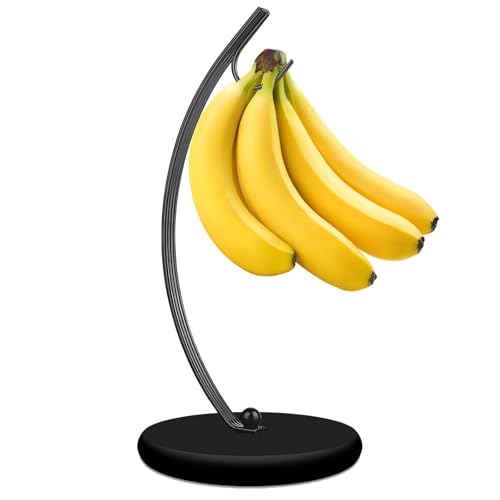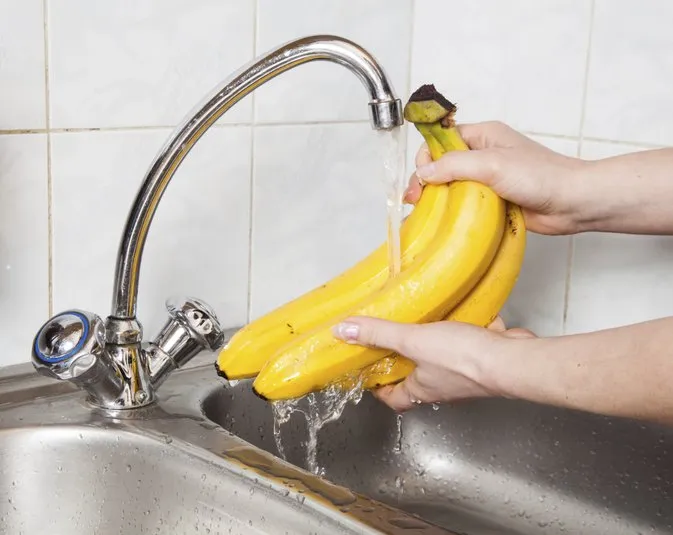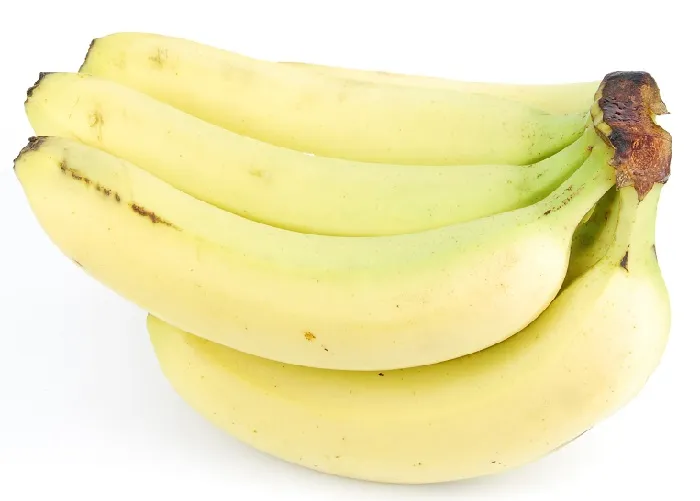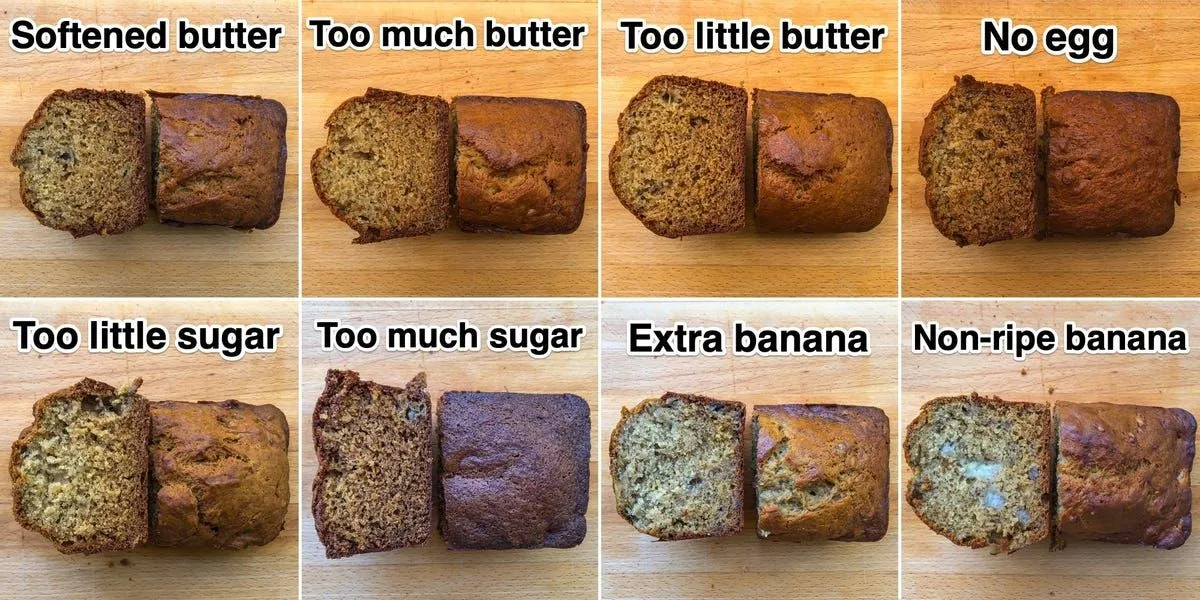For many people, bananas are a favorite fruit (favorite herb?). In fact, bananas are one of the most frequently purchased and most readily available types of products in the grocery store.
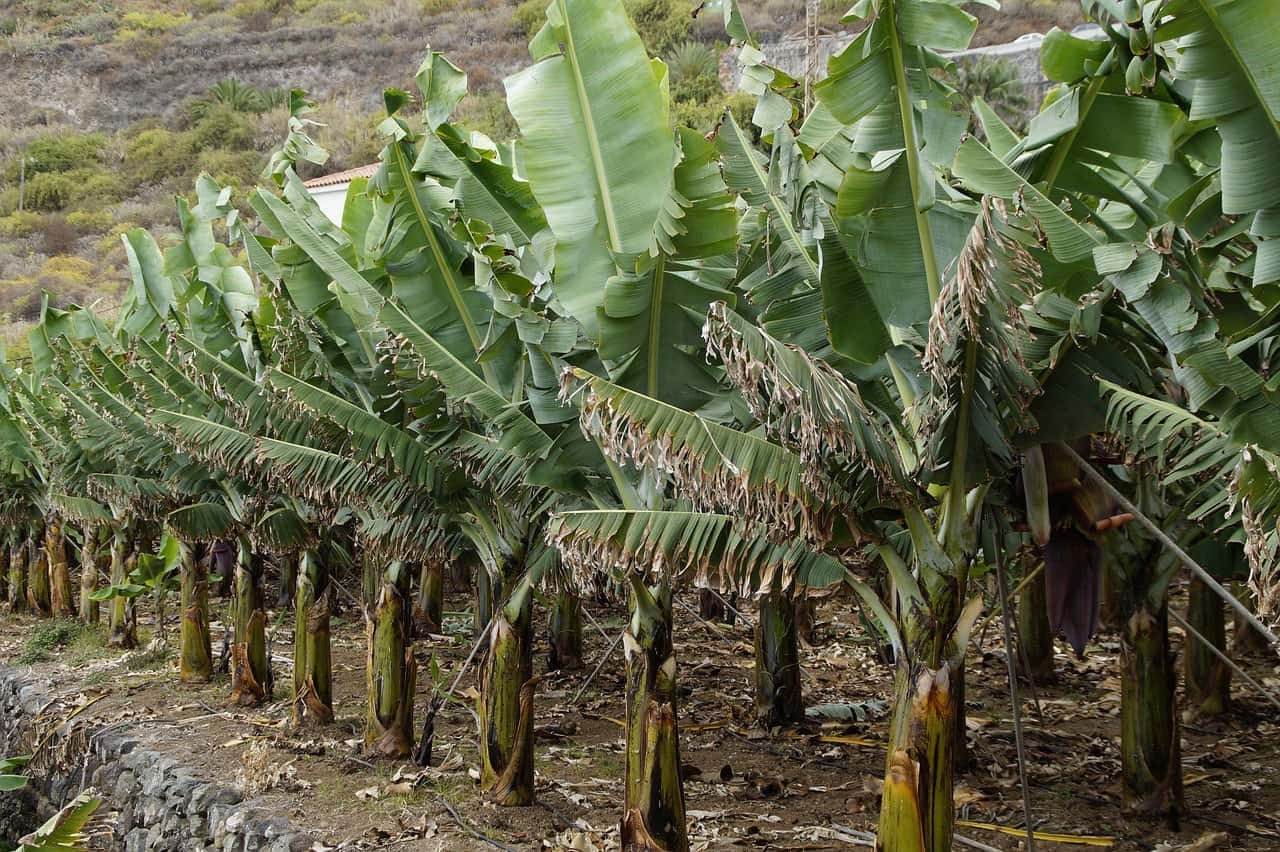
Bananas are typically inexpensive and provide a high dose of potassium and other valuable nutrients, making them a popular choice for shoppers everywhere.
Did you know that Americans consume an average of 27 pounds of bananas per year?
In spite of the fact that bananas are so commonly bought and enjoyed, most people do not know much about bananas. They remain something of a mystery, even though we love to eat them.

We know that they are often imported internationally, and perhaps we know about some of the treatments they undergo to prepare them for consumption, but there is a wealth of interesting information about how bananas are grown and harvested that is largely unknown.
However, the lack of appreciation for banana related knowledge does not need to continue. Welcome to your central database for everything you might want to know about bananas.
HOW BANANAS GROW
Do bananas grow on trees?
If you ask most people how bananas are grown, they would reply that bananas grow on trees. While this appears to be true, the plants from which bananas grow are not actually trees.
They are classified as perennial herbs. There is an underground stem called a rhizome that serves as the root of the plant. The main trunk sprouts up from the ground, and this is what produces the banana cluster.
While the herb has a base that appears to look like a trunk, it is much different from the trunk of a tree.
Unlike a tree trunk, the trunk of a banana plant is not woody or hard in texture. Instead, it is more like a stem in the sense that it is full of moisture and very fleshy.
After the banana cluster has been formed, the stem will stop producing fruit – its work is done once the banana cluster appears. Instead, the next largest stem in the bunch will produce its banana cluster, and so on.
As the process continues, more trunks will produce more banana clusters, and soon they will be sprouting up everywhere.
What is the trunk of a banana plant made of?
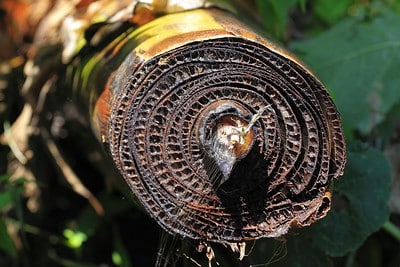
The trunk of the banana is made of leaf stalks all wrapped around each other, and this is where new leaves start growing inside.

The new leaves push up against the middle of the plant and emerge from the center of the crown. The flower does this as well, and this is what creates the banana cluster.
When the cluster appears, the bananas curl upward to expose themselves more effectively to the light.
When the banana plant grows, it grows in layers. It creates one round after another, branching out from itself as each leaf forms and emerges from the center of the plant.
How to know when a banana plant reached its full maturity?
The leaves will brown and die off as the plant gets larger. However, the “trunk” remains even as the leaves fall off. As the banana plant grows, the stalk becomes larger in diameter.
Eventually, the stems of the banana plant will grow as large as eight inches to a foot in diameter, at which point the plant has reached full maturity.
When the banana plant is cut, there will be rings visible inside, similar to a tree. On a banana plant, however, the rings separate into curved planks.

How hard is the process of growing banana?
« Cooking with Bananas: 6 Modern Recipes Using Bananas in Interesting Ways
Are Bananas Facing Extinction? »
The process of growing banana plants can be extremely labor-intensive, at least in large quantities intended for commercial production.
It can involve extensive measures such as clearing plant growth around the area, propping up the banana plants to prevent bending (which can happen as the plant grows, due to its increasing weight), and widespread use of pesticides as well as covering banana plants with bags to keep them safe from wind, birds, insects, and extreme temperatures.
HOW BANANAS REPRODUCE
Are the seeds involved? How is the sex life of a banana plant?
A great example of something most people don’t know about bananas is how bananas reproduce.
The propagation of the banana species begins with male and female banana flowers. First, there is a bud, which can also be referred to as a bract.
Within this bract, both male and female flowers exist. The female flowers evolve into the fruit of the banana, while the male flowers remain within the bract, beneath the fruit portion.
When the banana fruit begins to grow, the female flowers develop to form the tips of the banana.
Meanwhile, many of the male flowers will have dried out, along with the bract. The male flowers and bract are then removed in order to direct more energy toward the growing fruit.
Typically, banana reproduction is an asexual process that does not involve seeds. Simply put, the sex life of the banana plant is not all that exciting.
While bananas do contain some seeds, they are not used for reproductive purposes. If you found a banana in the wild and opened it, you would probably find seeds inside.

Some banana seeds are large and actually take up a good portion of the fruit, rendering the flesh difficult to consume.
The commercial bananas that most of us are familiar with, however, have been bred using a specific process designed to make them seedless triploids, not forming mature seeds.
If you have ever sliced open a banana and noticed those little dark specs, then you have found immature seeds that will not develop. This is what happens with triploids.
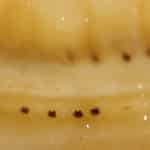
When bananas are bred commercially, they are reproduced by using something called “banana pups.”
This means that the mature banana plant develops rhizomes that grow into smaller plants, which are the pups. The pups can then be removed and replanted, and the process continues.
HOW AND WHEN BANANAS ARE HARVESTED
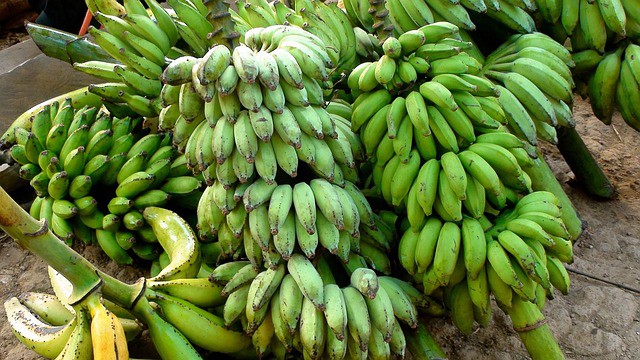
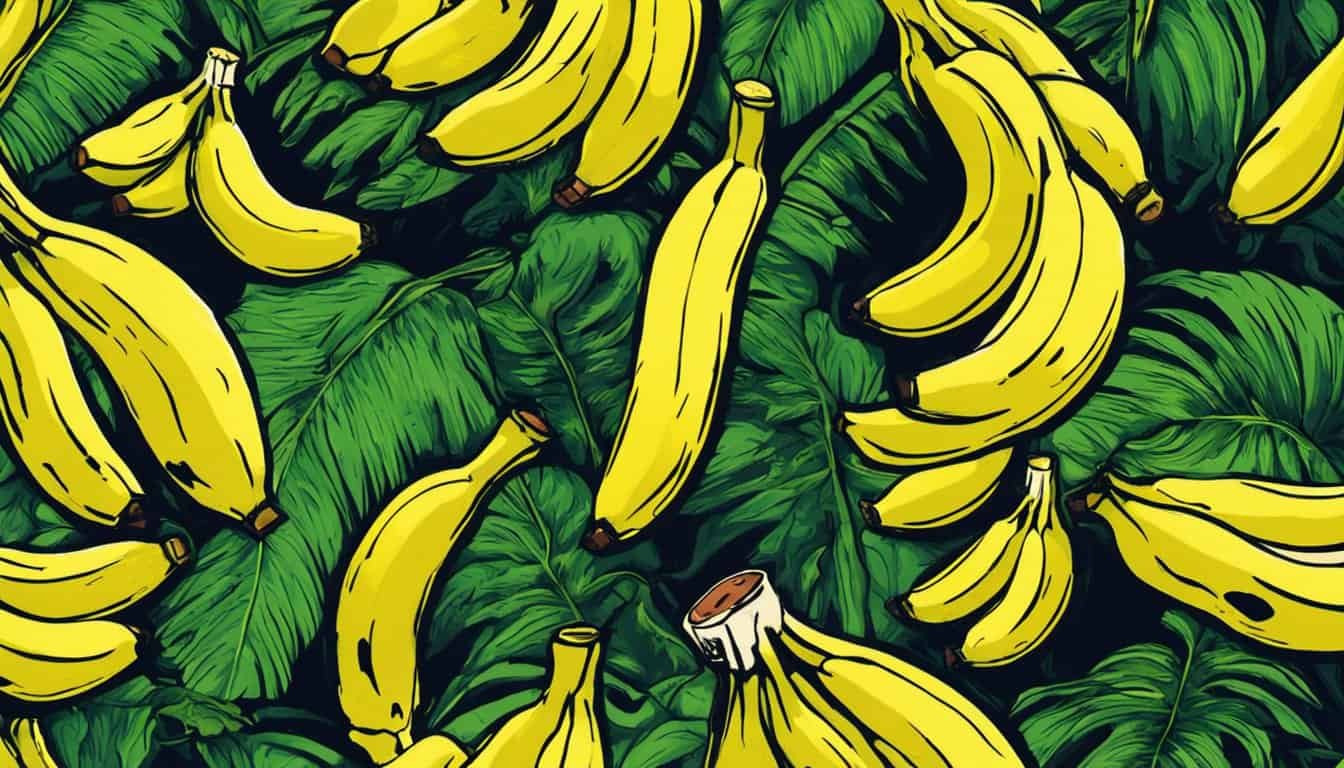
Bananas are harvested after nine months of growing, at which point they are still green. While the first flowers may begin to emerge after six months, there is still plenty of growing to do at this point.
The leaves should be left around the banana, especially the leaves protecting the top portion of the stalk from getting too much sunlight and burning.
Eventually, purple flower petals will curl back and fall off, revealing clusters of bananas. Each banana is called a “finger,” while the cluster itself is a “hand.”
On a single banana plant, there may be anywhere between four hands, to twelve or more. If you look under the petals and see what appear to be tinier versions of the banana fingers, these are the male flowers.
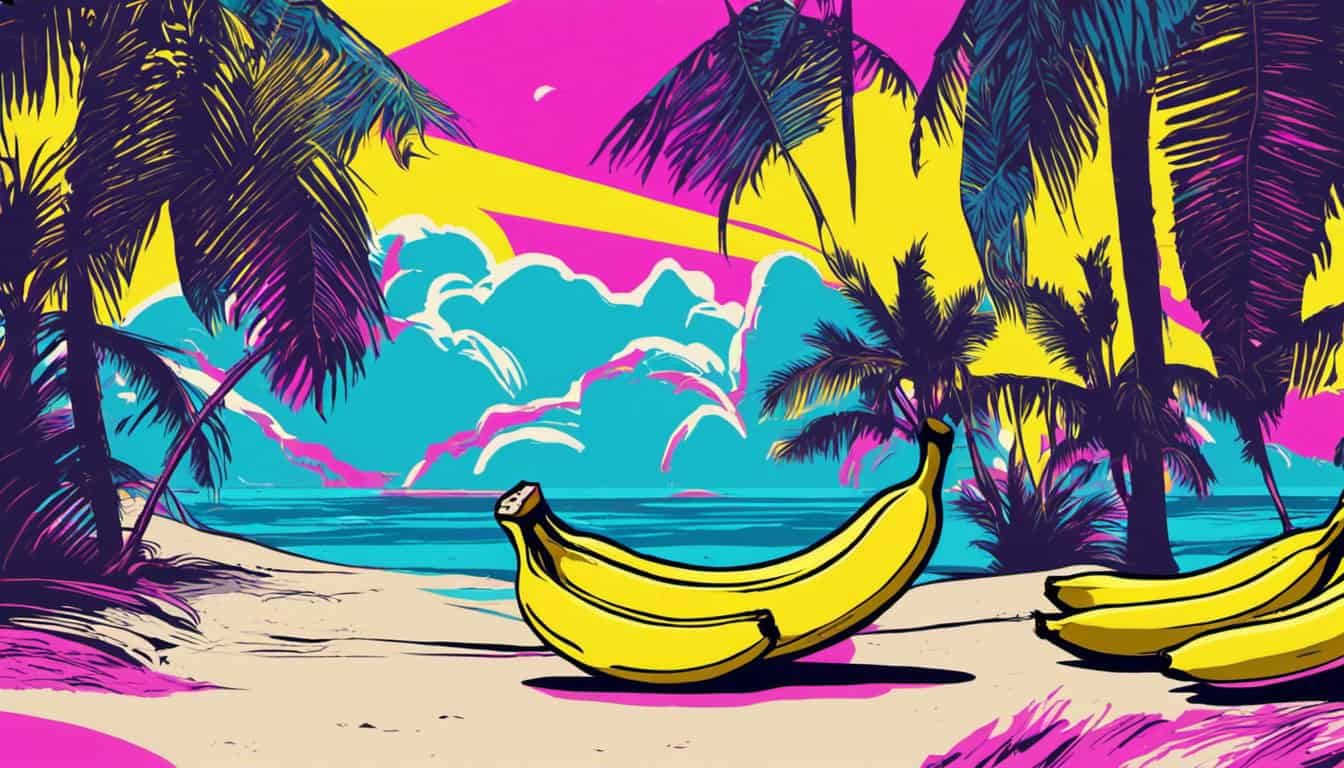
As discussed above, the male fingers will eventually dry up and fall off, allowing the female fingers to absorb all the energy of the plant, producing the best fruit possible.
In some production centers, a small number of bananas are removed during the growth period to encourage bigger bananas when it’s harvest time.
As the growing amps up into full swing, there are still about two months to go before the bananas are ready for harvest.
Around the nine-month mark, when bananas are well rounded with ribs, and the flowers located at the tips have dried to the point that they can rub off easily, the bananas are ready to be picked.
They will still be green, but they will start to ripen as soon as they are picked, regardless of their size.
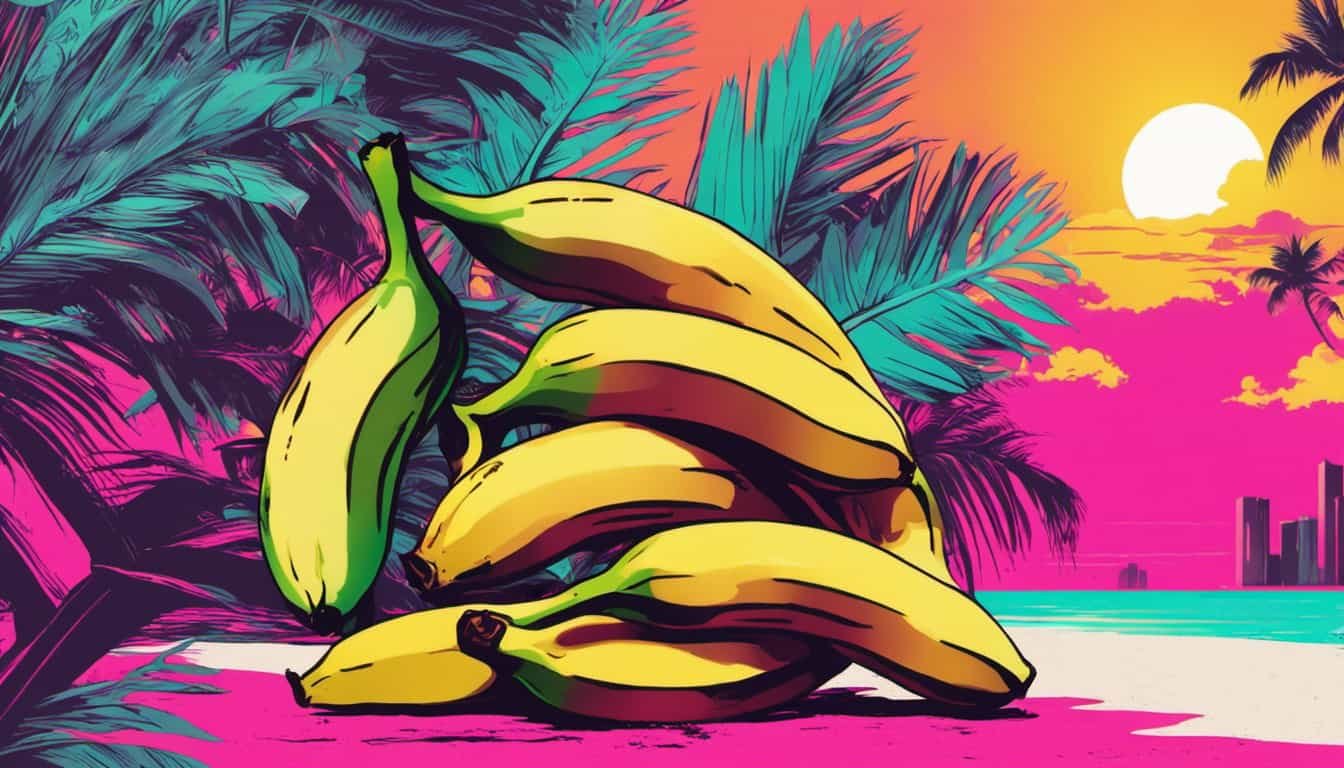
Bananas that ripen on the bunch will taste the best. Be careful, however, not to pick too many at once.
Things happen fast after they begin to ripen, and sometimes they will ripen at a faster rate than they can reasonably be eaten or used.
Once the bunches are picked, the rest of the banana plant will die shortly thereafter. Believe it or not, a bunch of bananas can grow to weigh as much as 40 to 60 pounds.
When bananas are produced in large quantities, they are brought to a packhouse after harvesting, where they can be inspected, sorted, and prepared for export.
They get moved into large, refrigerated ships that help increase their shelf life while in transit. When they reach their destination, they are brought to ripening rooms, where ethylene gas is used to help the bananas ripen more readily for purchase.

They are then sent to the shops, where they can be purchased for consumption.
IDEAL GROWING CONDITIONS
Bananas are a thirsty plant, taking in lots of water as they grow. Ideally, they are grown in low, wet conditions.
Bananas grow best in soil that is rich and fertile, such as in a pot or planting hole containing lots of compost.
One secret to good banana growth is the addition of aged chicken manure, as it provides the ideal soil condition and nutrients needed for quality growth.
Bananas can also be grown in a container, but in this case, they will need to be watered multiple times per day.
THE ORIGIN OF THE BANANA
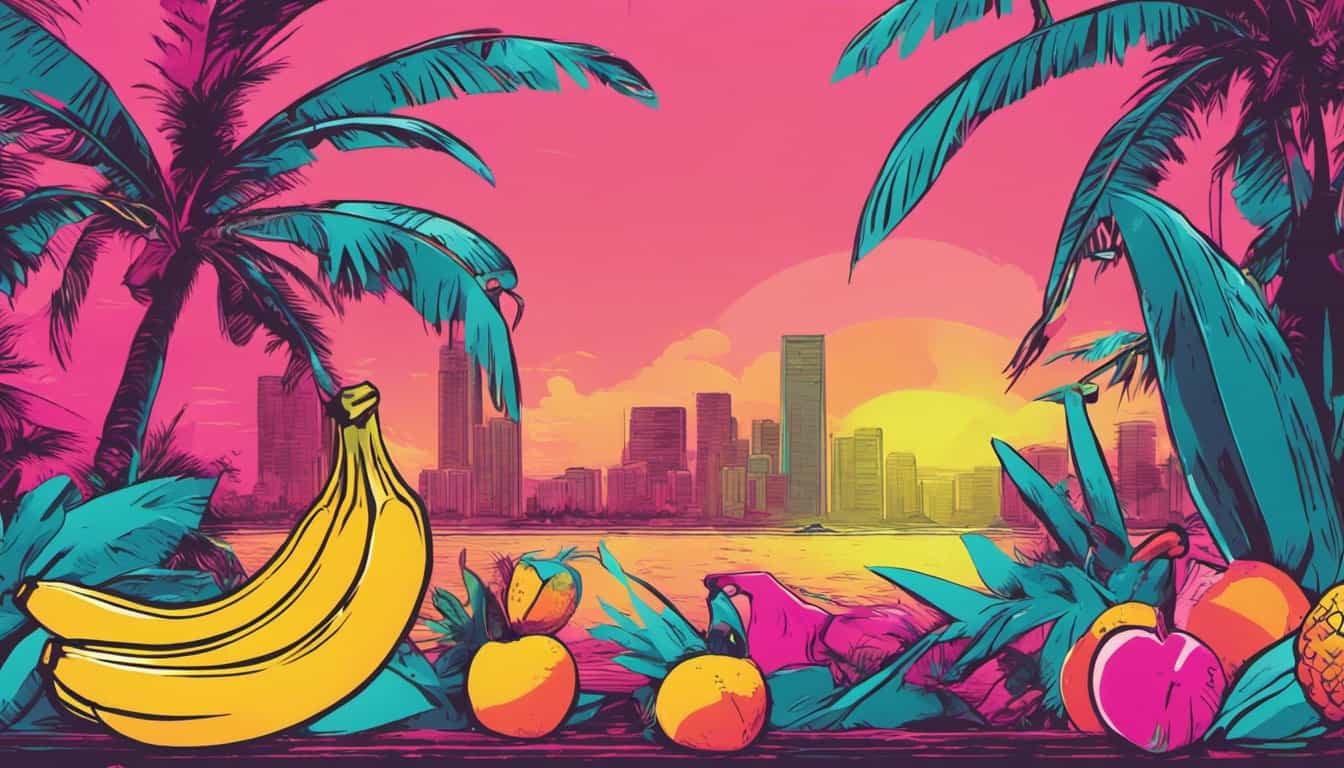
A banana is actually a type of plantain, but it is much sweeter and softer. On the contrary, plantains are much starchier and tougher and need to be cooked before they are consumed.
The soft, sweet bananas, sometimes referred to as “dessert bananas,” are actually bred from mutant strains that produced fruit without mature seeds.
When banana plants are cultivated, rhizomes are removed from host plants and are then replanted to grow independently.
In this way, one banana plant could go on to mother an entire field of banana plants that are genetically identical to one another.
GETTING TO KNOW THE BANANA
If you’re interested in knowing all there is to know about the banana plant, here’s some important vocabulary to master, which should impress everyone on your trivia team and perhaps a few local grocers:
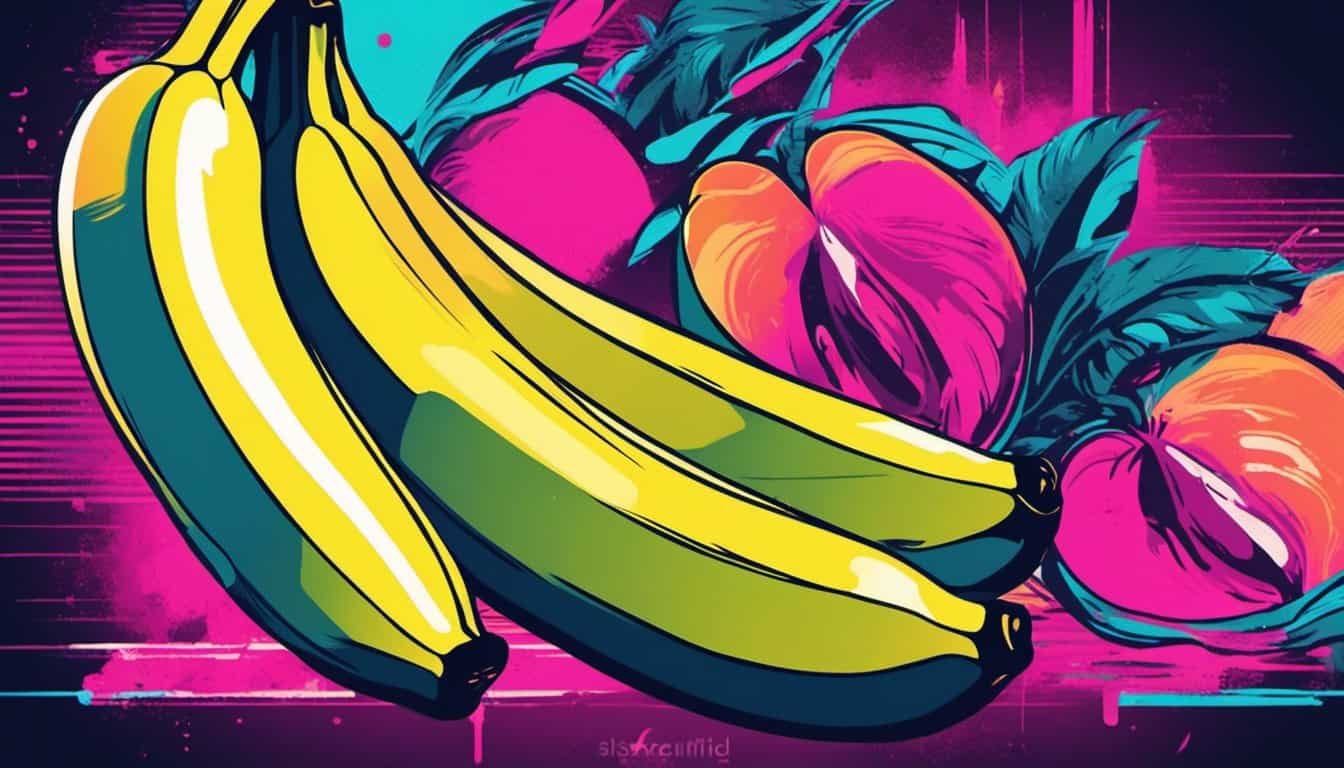
Musa: The genus of the banana, whose full name is Musa sapientum. If you ever wanted to know the formal name of the banana you’re munching on, there it is.
Phloem: The “strings” of the banana fruit, AKA those little fringes you pull on as you’re working your way down.
Epidermis: The banana peel, or the skin of the banana. Believe it or not, this can be eaten. It should probably be cooked, but it can technically be eaten raw.
Pulp: This is the part of the banana you’re used to eating.
Finger: One single, solitary banana
Hand: A group of bananas, anywhere up to 20
Bunch: A collection of hands, which can also be referred to as a stem
HEALTH BENEFITS OF BANANAS
Why eat so many bananas after all? We’ve established that they tend to be pretty popular, but beyond their great taste, what is the benefit of making bananas a regular part of your diet?
Vitamin B6
Bananas are actually one of the best sources of Vitamin B6, at least when it comes to fruit.
Vitamin B6 is easily absorbed into the body and a regular-sized banana can provide a quarter of the daily recommended dose of the vitamin.
Vitamin B6 is crucial for bodily processes such as the production of red blood cells, the metabolization of amino acids, carbohydrates, and fats, and the removal of toxic chemicals from the liver and kidneys – all great reasons to add a little more banana to your daily life.
Vitamin C
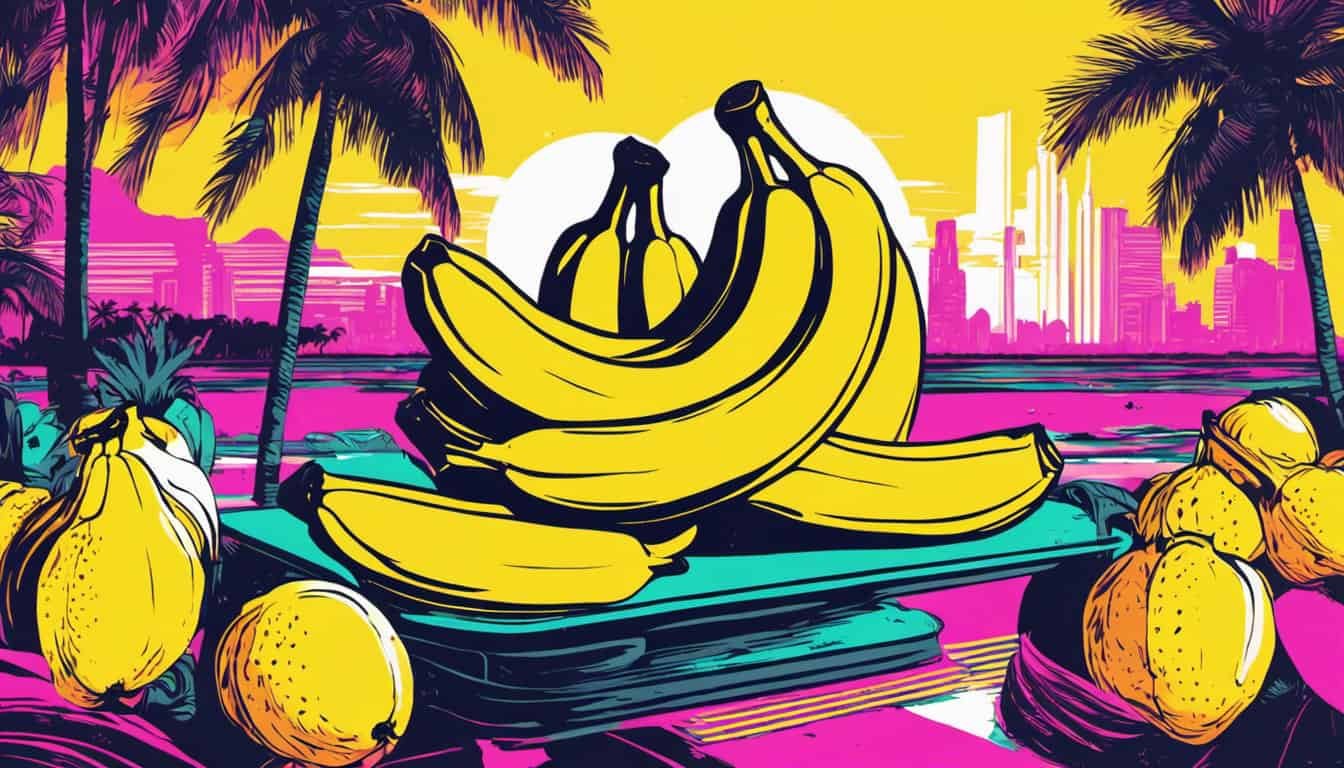
When you first hear Vitamin C, you probably think of oranges before bananas, but a banana will provide 10% of your daily Vitamin C requirement.
This means bananas help with the protection of your body against cell damage, the absorption of iron, and the production of collagen.
Potassium
Potassium is probably what bananas are best known for. Due to their high concentration of potassium, bananas help your body to maintain good blood pressure and heart health.
Other
There are plenty of other great health benefits to eating bananas. For example, they aid digestion and minimize gastrointestinal issues including constipation, heartburn, and stomach ulcers.
They provide energy to your body due to their natural sugars – sucrose, glucose, and fructose – without the cholesterol and fat.
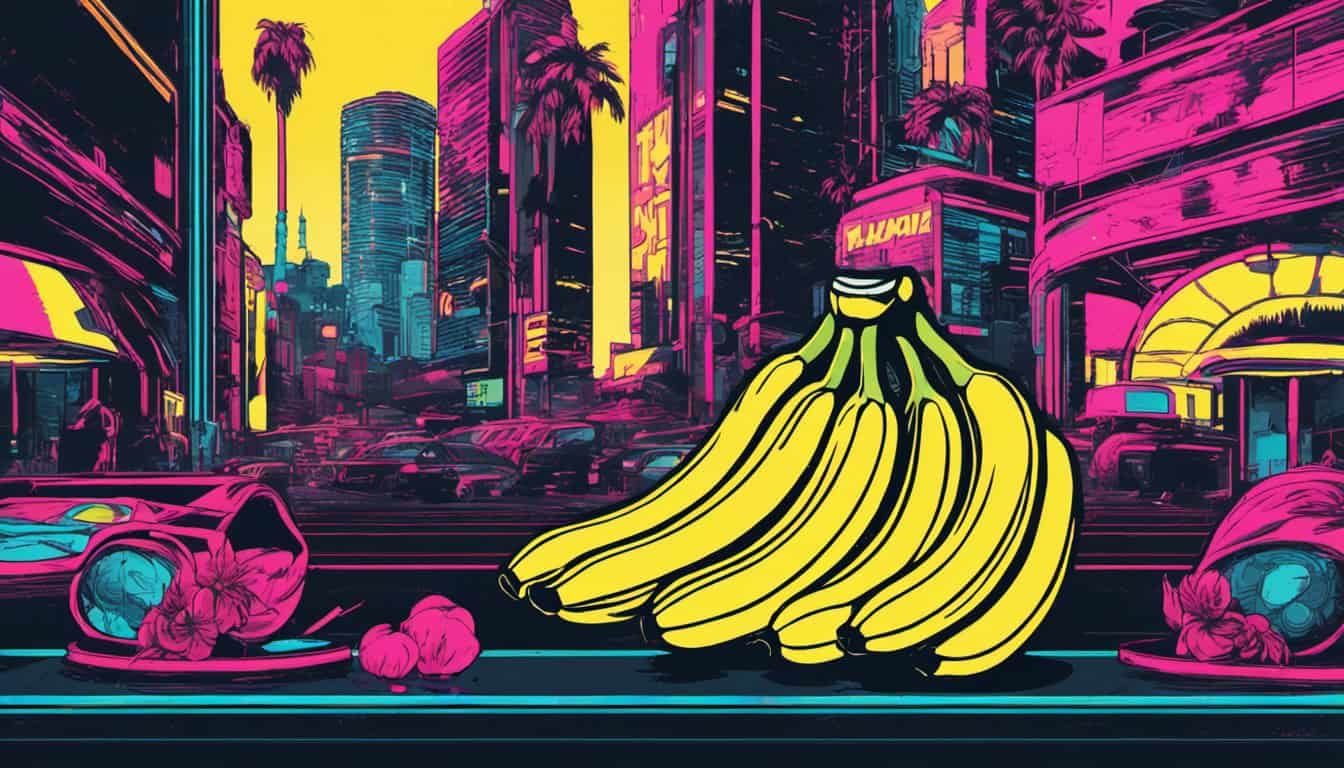
They are great for your skin because of their manganese content, and they support brain health and the sleep cycle. What’s not to love about bananas?
Conclusion
Bananas are a popular fruit (and they are never going to kill you), rich in health benefits and excellent in taste. Who doesn’t love a good banana split, or bananas foster, or banana pancakes, or banana bread?
Bananas can be enjoyed as a snack or as part of a meal at almost any time of the day, and they have many uses for the functioning of healthy bodies and organ systems.
Beyond their health benefits and great taste, bananas are a fascinating fruit that many people don’t know much about.
But now, you are prepared to educate the world on the growth, harvesting, and benefits of bananas. I hope you will go forth and share your knowledge with the world!




